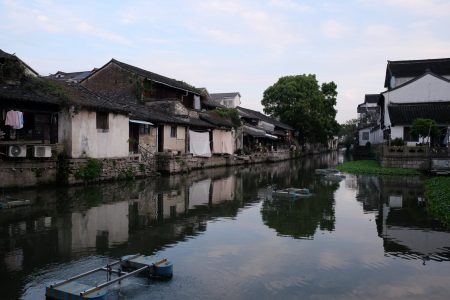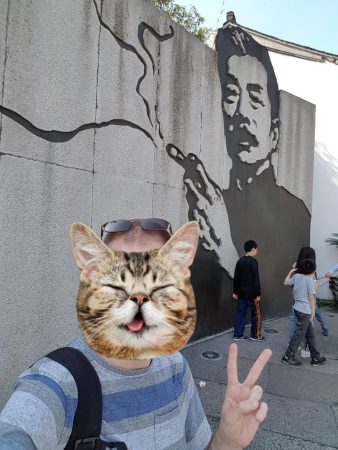And now as Michael Bolton might say, back to the good part. You might, wrongly, think this was part of my previous Chinese adventuring but actually I came back to the UK for a month and then work asked me to go back to Suzhou again for another week. So I dutifully did and after that was over went to Shaoxing in Zhejiang for a long weekend. One of the great things about business trips to China is you’re never short of new places to go on excursions. Unlike say, *cough* Norway *cough*.
Shaoxing reminds me a lot of the older parts of Suzhou. It’s got the same white washed architecture and canals everywhere instead of roads. But it’s quieter, in a good way, and a lot less commercialised.
I didn’t actually spend that much time in the city itself, because I took all of Saturday to go out for a day trip. But I visited the most important site, or at least the one everyone told me to go to, Lu Xun’s birthplace. I hadn’t heard of him either, but he’s a famous early 20th century writer.
Around his birthplace area there are several well-preserved Qing dynasty houses which you can visit. For free as well! Which is quite unusual in China. And a few hundred meters away is a large classical garden, but not as impressive as the ones in Suzhou.
As an aside, the Chinese name 绍兴 ShaoXing seems to be almost impossible for me to pronounce. Every time I told someone 我周末去绍兴 they would just look at me blankly and be like “where..?”. My teacher is always complaining that I can’t pronounce other sh- words like 书 properly. And that followed by the elusive x-that-sounds-like-an-s is not a good combination. Also the 兴 is first tone like in 兴奋 not fourth tone like in 高兴. Once I figured this out my success rate increased to maybe 20%…
























 Posts
Posts